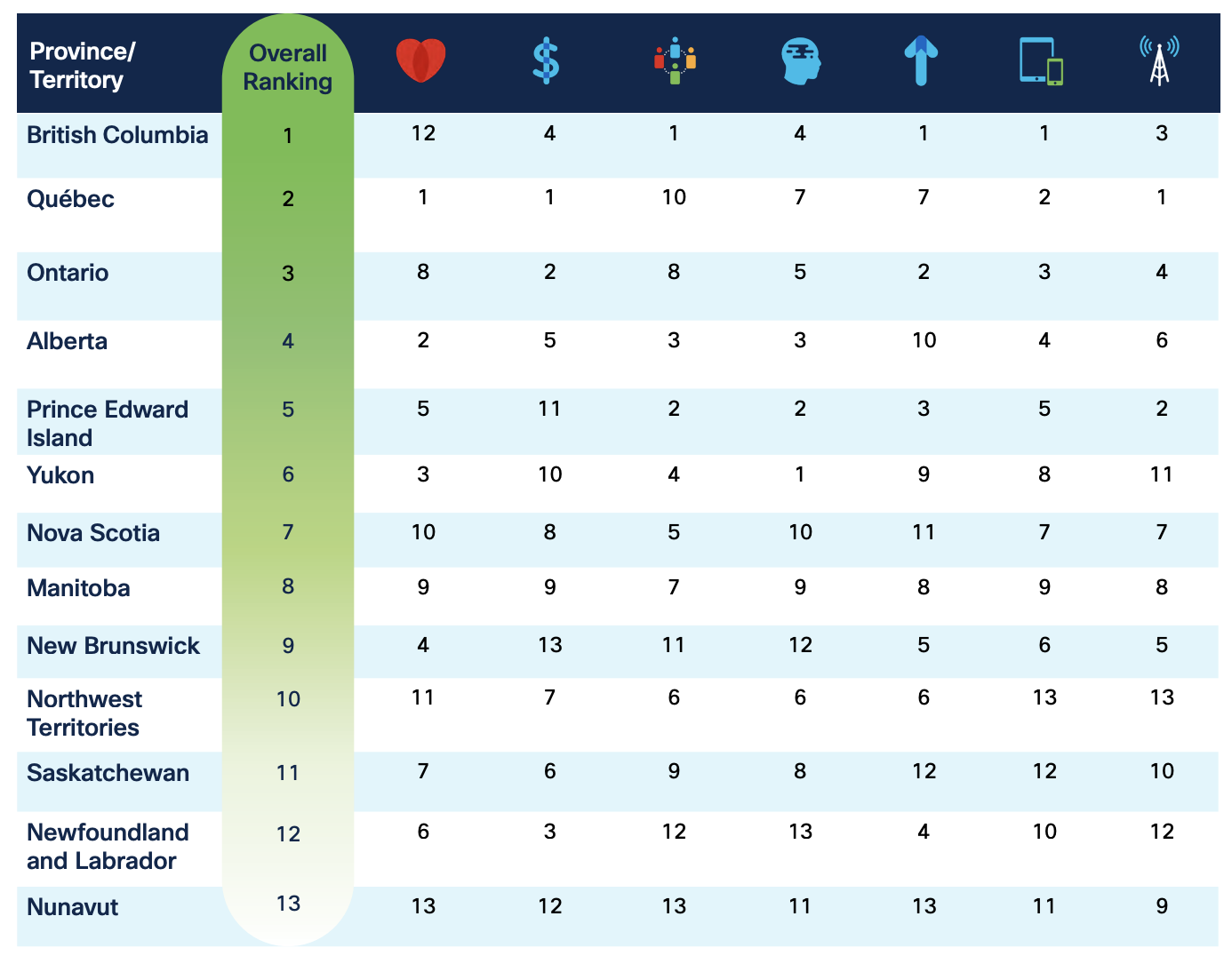Canada’s digital readiness beams in front of most of the world, but some of its provinces and territories are suffering
When the pandemic hit the world in 2020, it exposed vulnerabilities in several areas that may not have been top of mind for many. One of those areas, according to a recent report from Cisco, is digital inequity.
With businesses closing their doors and Canadians forced to stay home, people relied on the digital economy to stay connected. But those in rural, remote, and Indigenous communities were leading the group suffering from a lack of access.
It’s easy for these factors to be forgotten when looking at Canada as a whole. On the world stage, Canada is doing well. Cisco’s Digital Readiness Index (DRI), which measures digital readiness on seven components to determine a country’s progress toward a digital society, ranks Canada 17th out of 146 countries.
“At a global level, Canada’s digital readiness performance year-over-year remains strong and consistent, meaning that we are continuing to invest in critical areas that will help us advance and stay competitive,” Shannon Leininger, president of Cisco Canada, said in the Cisco Canada Digital Readiness Index 2023.
But the story drastically differs when looking at each province and territory separately.
Breaking it down
The seven components examined through the DRI include basic needs, business and government investment, ease of doing business, human capital (through a skilled workforce), start-up environment, technology adaption, and technology infrastructure. The higher the collective score, the more digitally ready each province and territory is for an increasingly technological future.
The analysis ranks B.C. with the highest DRI score (1.71), with the province taking first place in the ease of doing business, start-up environment and technology adoption categories.
Québec ranks second (1.00) with the highest scores in the basic needs, business and government investment and technology infrastructure categories. Ontario ranks third (0.98), and Alberta rounds out the group of provinces labelled as having a “high” DRI score with 0.83.
P.E.I, Yukon, and Nova Scotia each have a “medium” DRI score.

Image credit: Cisco
Manitoba ranks eight and is the first province to have a score below the national average, with (-0.34). However, the report highlights its young population and participation in the labour force as “great strengths.”
New Brunswick is ninth (-0.49), and its lowest score is in the businesses and government investment category, which also represents the lowerest score in all of Canada. The Northwest Territories is tenth (-0.60) and has the lowest technology adoption and technology infrastructure scores in Canada.
Saskatchewan ranks eleventh (-0.62) with a noted need for improvement in the start-up environment and technology adaptation categories.
Newfoundland and Labrador has the second-worst overall score with -0.73 and “was well below the national average.”
Nunavut has the lowest score (-2.28) out of all the provinces and territories in Canada. “ [This score] reinforces the need for all levels of government to address basic needs of the population and build a solid, enduring foundation for digital readiness.”
What does this mean for Canada as a whole?
The mismatched pace of the 13 provinces and territories points to the lack of economic and social opportunity across the count, which is a risk for the country.
“There is a real risk that, if governments and policy-makers do not address this gap with continued focus and investment, regions in Canada that perform at the lowest levels of digital readiness will fall further behind, decreasing Canada’s digital leadership position.”

Image credit: Cisco
While the report praises the steps the federal government has made, including its Connectivity Strategy, it says the government should prioritize rural, Northern and Indigenous communities within these initiatives. The program features two components: providing mobile coverage across Canada and giving residents broadband download speeds of at least 50Mbps and upload speeds of 10Mbps.
“Even in provinces and territories that have high levels of high-speed connectivity, rural and remote communities are disproportionately impacted. Without adequate, high-speed internet access in these communities, the connectivity gap across Canada will continue to grow.”
Image credit: Shutterstock
For all the latest Technology News Click Here
For the latest news and updates, follow us on Google News.

